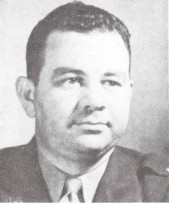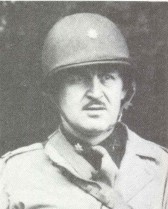Operations in the Hurtgen Forest

By Captain Kenneth A Peters
Roer River Dams
The forest area covering approximately fifty square miles within the towns of Aachen-Düren-Monschau is the Hurtgen Forest. Closely packed fir trees ranging to the heights of 75 to 100 feet are found on the hilly slopes. The roads are few, soft, narrow, and steep. This constituted the battle field. This was to be the gateway to the all important Roer River dams. The capture of these dams was of imminent importance to future operations. To have crossed the Roer River without the dams in our possession would have, invited a major defeat. One of two things had to be done; first, to capture the dams so that a crossing could be made, or secondly, to destroy the dams by bombing or forcing the Germans to blow the dams prematurely. British Royal Air Force bombing had little or no effect on the dams. The only problematical method of accomplishing the mission was to attack and seize the dams. The 28th Infantry Division, part of the United States V Corps, was assigned this task. After capturing the village of Schmidt, repeated German counterattacks and effective artillery and mortar fire turned back this division badly mauled. The 8th Infantry Division, then relieved the 28th Infantry Division, in this, the Hürtgen-Vossenack area.
Pre-planning the Hurtgen Attack
The period 11 to 24 November 1944, CCR, 5th Armored Division, organized plans to assist V Corps in clearing the Hurtgen Forest area. This combat command was then attached to the 8th Infantry Division on 19 November, for this coordinated task.
The components of the CCR organization were:
- Headquarters Reserve Command, 5th Armored Division Detachment A, Hq. and Hq. Company, 3d Armored Group
- 10th Tank Battalion 47th Armored Infantry Battalion
- 95th Armored Field Artillery Battalion C Troop, 85th Cavalry Reconnaissance Squadron (Mecz)
- C Company, 22d Armored Engineer Battalion
- C Company, 628th Tank Destroyer Battalion (SP)
- C Company, 387th Antiaircraft (AW) Battalion (SP)
- C Company, 75th Medical Battalion (Arm'd)
- Det., C Company, 127th Ordnance Maintenance Battalion
The tank and infantry elements of CCR, "married" prior to D-Day, in England. This formation was consistent throughout the European campaigns for CCR, except when special missions required a tank heavy force or an infantry heavy force. The 10th Tank Battalion, known as Task Force Hamberg, was commanded by Lt. Col. William A. Hamberg. This force contained the married A Companies, C Companies, and the light tank D Company, as the major components. Lt. Col. Howard E. Boyer, commander of the 47th Armored Infantry Battalion, was called Task Force Boyer, which consisted of the married B Companies, C Company of the 628th Tank Destroyer Battalion less 1 platoon, and the Armored Platoon of C Company, 22d Armored Engineer Battalion.
The plan of attack prescribed that the woods southwest of the village of Hurtgen was to be cleared by the 121st Infantry Regiment of the 8th Infantry Division. The edge of these woods was designated as the line of departure for CCR. Task Force Boyer was to lead the attack, to seize and hold Hurtgen until relieved by the 13th Infantry Regiment. Task Force Hamberg prepared to pass through Boyer at Hurtgen, to attack and hold Kleinhau and the high ground northeast of Kleinhau, Hill 401. The movement was to be made 23 November to Roetgen, the selected assembly area. Task Force Boyer was to move the same night from Roetgen to the attack position west of the line of departure, dismount the infantry and meet the tanks of B Company at 0730, time of the attack. C Company, 22d Engineers had the mission of marking the route of march from the assembly area to the attack position to facilitate the night movement. In addition, they would be prepared to support the attacks of both task forces by locating and removing mines. Road guides for the night movement was to be furnished by C Troop, 85th Reconnaissance. The 95th Filed Artillery was in direct support of CCR.
The attack of CCR was postponed. Elements of the 8th Infantry Division had difficulty mopping up the wooded area that was to be seized prior to the armored attack.



